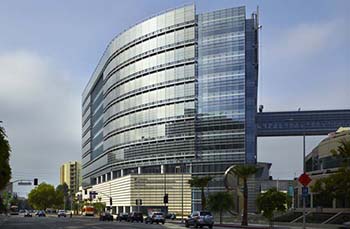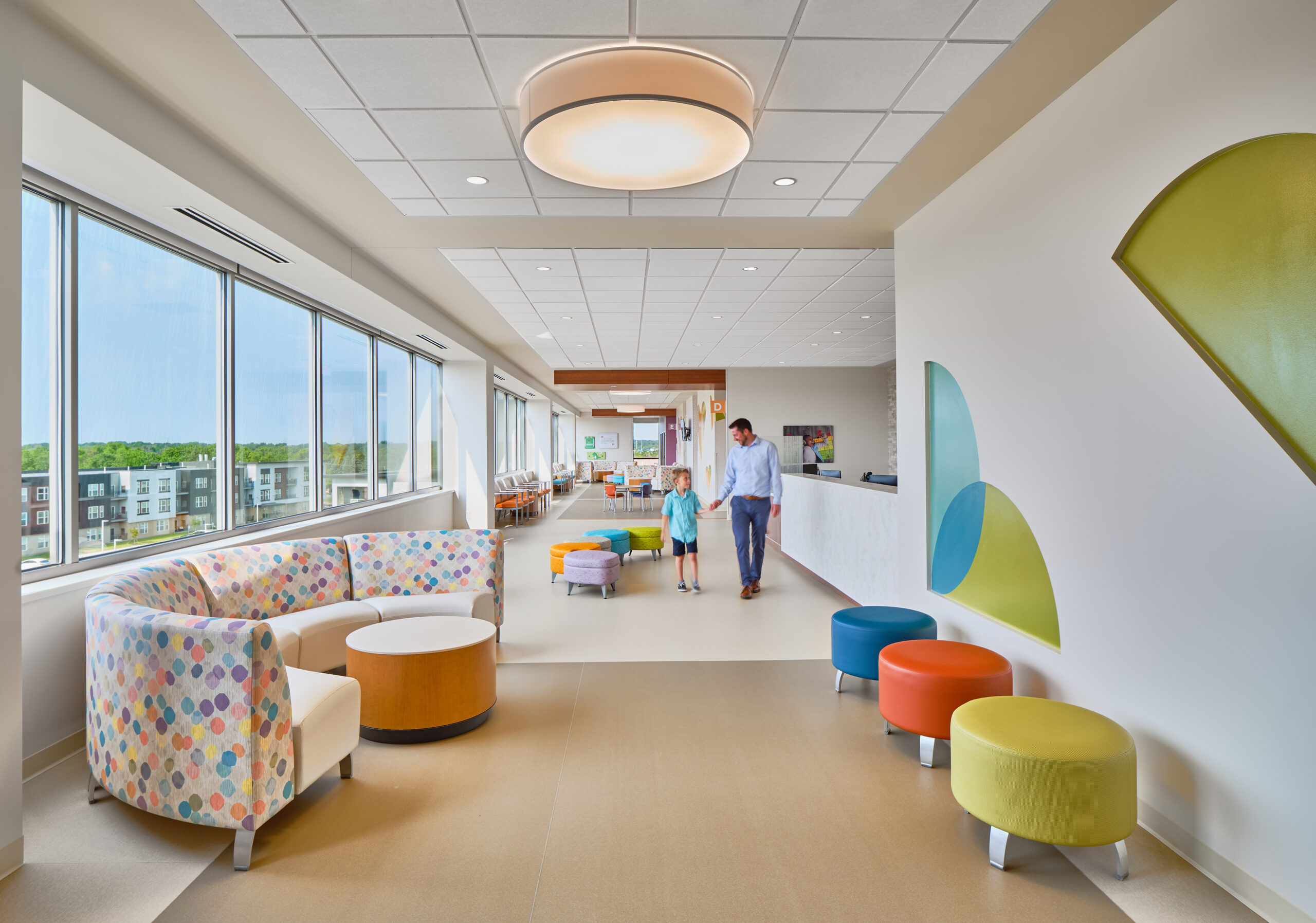 LOS ANGELES — The Advanced Health Sciences Pavilion in Los Angeles recently received LEED Gold certification after opening last summer. The 11-story, 820,000-square-foot pavilion is the latest addition to the Cedars-Sinai Medical Center and is home to the Cedars-Sinai Heart Institute, which focuses on biomedical research and technologically advanced medical education such as stem cell research, as well as neurosciences (Department of Neurosurgery and Department of Neurology), the Regenerative Medicine Institute and other clinical specialties and outpatient procedure suites. The building brings health care and translational research together so that physicians and scientists can work together in developing new procedures and treatments.
LOS ANGELES — The Advanced Health Sciences Pavilion in Los Angeles recently received LEED Gold certification after opening last summer. The 11-story, 820,000-square-foot pavilion is the latest addition to the Cedars-Sinai Medical Center and is home to the Cedars-Sinai Heart Institute, which focuses on biomedical research and technologically advanced medical education such as stem cell research, as well as neurosciences (Department of Neurosurgery and Department of Neurology), the Regenerative Medicine Institute and other clinical specialties and outpatient procedure suites. The building brings health care and translational research together so that physicians and scientists can work together in developing new procedures and treatments.
HOK’s Los Angeles office served as the architect, working closely with the construction company, San Francisco-based Hathaway Dinwiddie, to achieve LEED Gold on the project.
The building is one of few health care projects to have received LEED-NC Gold certification. It achieves five strategic elements of sustainability: energy and atmosphere, materials and resources, water efficiency, indoor environment quality and overall sustainability. For example, the exterior of the pavilion features a double- facade high-performance glass skin that reduces heat gain and glare while providing a comfortable interior environment. A comfortable interior environment consists of floor-to-ceiling windows, which provide natural light as well as views of the Hollywood Hills. Green building elements also include the automated building control systems that regulate the building’s energy use and solar panels on the rooftop of parking lots that provide power to the parking garage.
“Attaining LEED certification is especially challenging for health care facilities, given the 24/7 demand on all their systems,” said Ernest Cirangle, AIA, LEED AP BD+C, director of design for HOK’s Los Angeles office, in a statement. “It takes an enlightened client who understands the long-term return on investment, as well as the immediate return on providing a healthy workplace for staff and a healing environment for patients. Cedars-Sinai’s team had both the knowledge and the conviction to make this project a success.”
The pavilion serves 500 to 600 patients each day. The design of the building follows a “bench-to-bedside” treatment model, which has become crucial in new medicine practices, providing advanced care for patients. The building houses translational research labs, as well as outpatient centers of excellence, clinical functions and outpatient procedure centers. A plaza level also features an educational center, café, pharmacy, blood lab and imaging facilities. The building connects to the existing medical center campus at the plaza level off the main lobby and with the 180-foot-long, Sue and Bill Gross Skywalk bridge at the fifth level.
The design of the pavilion reflects the collaboration of health care and science and includes a new symbolic entry to the medical center. The lower levels of the building were created using a natural limestone base that creates a plinth for the glass structure above. The limestone forms an entrance canopy that leads to the ground floor lobby and simulation lab, which feature large windows that provide light and views to the outside. The top two floors, dedicated to research, feature a connecting stair that opens to a gathering space and encourages collaboration among physicians, researchers and educators. This “living room” space, located adjacent to the translational research laboratories, gives researchers a place for casual meetings and quiet concentration.
“The image of the building, with its high-tech sensibility, sleek transparency and quality, well-crafted materials, speaks to the synergy of health care and science that is at its heart,” Cirangle said in a statement.
The project won a 2013 design award from the American Institute of Architects California Council.





